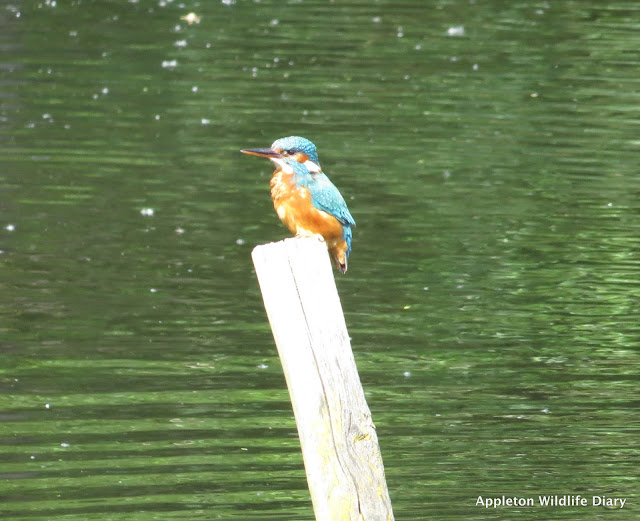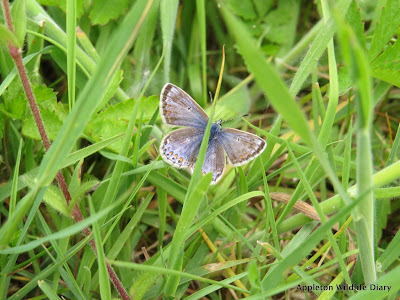The sun was burning down on us with a gentle breeze in the air.
RSPB Rye Meads is a great wetland reserve.
There are 10 different hides around the reserve including the Kingfisher hide, Otter hide and the Lapwing hide.
Whilst heading to the Kingfisher hide we stopped of at one of the other hides to see what birds were around. There were a large number including Gulls, Little Grebe, Redshank, Tufted ducks and nesting Coots.
 |
| Adult Little Grebe (My favourite) which is sometimes known as a Dabchick |
 |
| Male and female Tufted duck |
The first thing we normally heard was a high pitch 'chee' followed by the bird appearing, with a fish in its beak, on one of the poles sticking out of the water.
After a few moments of the Kingfisher looking around it would fly into the hole in the artifical bank where it had its nest chamber. A Kingfishers nest can be up to a meter long.
When the Kingfisher came back out of its nest it flew back to the pole then dived into the water to have a quick wash. After doing this a couple of times the Kingfisher would fly away to collect another fish.
Both male and female were around feeding the young.
 |
| Muntjac on top of the Kingfisher bank. |
Looking out from the Kingfisher hide I could see a couple of nest boxes on a pylon, one of which was being used by a Kestrel.
 |
| Not a great photo but the only one with both Kingfishers together |
When you first arrive in the reception, there is a TV screen that has a live feed to the Kingfisher bank. It was quite funny to see that this Heron decided the best place to sit was on top of the camera.
 |
| Black- headed gull |
While we were at the RSPB nature reseve I got to talk to Tom Mason who gave me lots of useful hints and tips about wildlife photography.
A big thanks to Katy who invited us to RSPB Rye Meads, and spent the day showing us around.



















































